
 Perenco UK has completed a campaign of velocity string installations on five wells at the West Sole Charlie platform in the Southern North Sea (SNS), situated 70 km east of Perenco’s Dimlington terminal on the Yorkshire Coast.
Perenco UK has completed a campaign of velocity string installations on five wells at the West Sole Charlie platform in the Southern North Sea (SNS), situated 70 km east of Perenco’s Dimlington terminal on the Yorkshire Coast.
The campaign was conducted by the Petrodec HAEVA rig and has delivered sustained production gains of around +5 MMscf/d, in line with expectations.
In a technical and commercial feat, the company completed ahead of schedule. Each of the wells are seeing improved production rates, running with 100% uptime, withouth the need for cycling. Two of these wells were brought online from scratch as they remained shut-in and were not producing.
The net effect is a new production rate for the West Sole field sustained above the 30 MMscf/d level. Recompletion using velocity strings is a proven technology in fields that are no longer producing at their original high gas rates.
In the case of West Sole, the original completion with 5½” tubings were no longer optimal, given the now partially depleted reservoir. Inserting velocity strings of narrower diameter helps to increase the fluid velocities, thereby sustaining production at lower pressures and allowing extension of field life. Perenco had previously deployed this technique to good effect in 2020 at the Hyde field and decided to continue with similar deployment at West Sole Charlie. Other SNS fields, such as Apollo, are also being evaluated for the same.
Perenco UK SNS Managing Director, Jo White, said, “Demand for gas in the UK is set to remain high, so enhancing recovery from domestic gas fields is vital for both energy security and for improving overall emissions intensity. Local natural gas resources have a significantly lower carbon footprint than imported liquified natural gas (LNG), which today accounts for a high proportion of the balance of supply. West Sole was the first offshore natural gas field to be developed in the UK. Since 1967, it has delivered cumulative production of more than 2.2 trillion cubic feet of gas. It remains a significant production hub in the SNS offshore gas network, with potential for future development and tie-in of nearby gas discoveries. Through renewal and application of new technology a sustainable and productive future remains possible for decades to come for the West Sole field.”
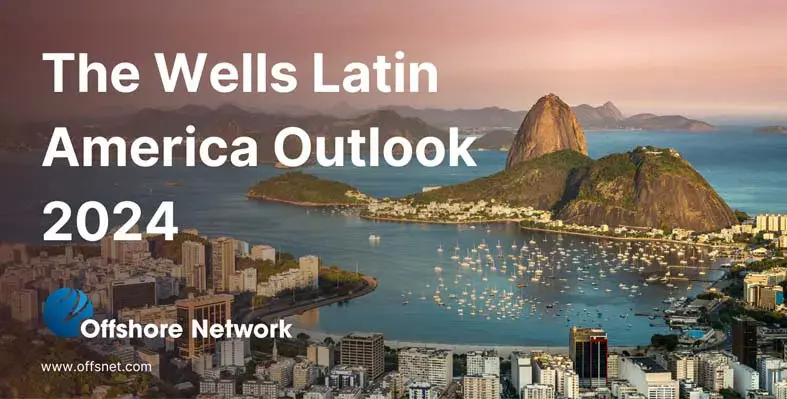
 Offshore Network has released the Wells Latin America 2024 Outlook that reviews the region's intervention and decommissioning drives, while considering the wave of new technology revolutioninsing the industry.
Offshore Network has released the Wells Latin America 2024 Outlook that reviews the region's intervention and decommissioning drives, while considering the wave of new technology revolutioninsing the industry.
The push behind these industry innovations come from watchdog organisations such as the Brazilian National Agency of Petroleum, Natural Gas and Biofuels (ANP) or Brazilian Institute of Environment and Renewable Natural Resources (IBAMA), which make sure that exploration and production activities are being carried out in a responsible and sustainable manner.
In Brazil, Petrobras have approximately 500 well interventions planned over the next 10 years, and also a significant decommissioning workload, which it has outlined in its 2024-2028 strategic plan. To achieve these feats, the company is actively researching cost-effective means to go about the task. Petrobras has plans to introduce thermite melting delivery in its operations this year. If all goes well, through tubing thermite P&A (TT P&A) delivery is expected by 2026, and the company is eyeing up the prospect of adopting self-abandonment technology by 2030.
The region's growing well intervention industry is taking inspiration from North Sea, where companies such as BiSN and RockSolid are introducing fresh approaches to well services. BiSN’s wel-lok technology, for example, uses bismuth as permanent seal for P&A operations, while RockSolid uses organic well barriers, eliminating the need for rigs or heavy equipments.
Reflecting on these landmark industry transformations that are currently sweeping through the region, Wells LATAM 2024 conference promises fully-rounded discussions and engaging exchanges.
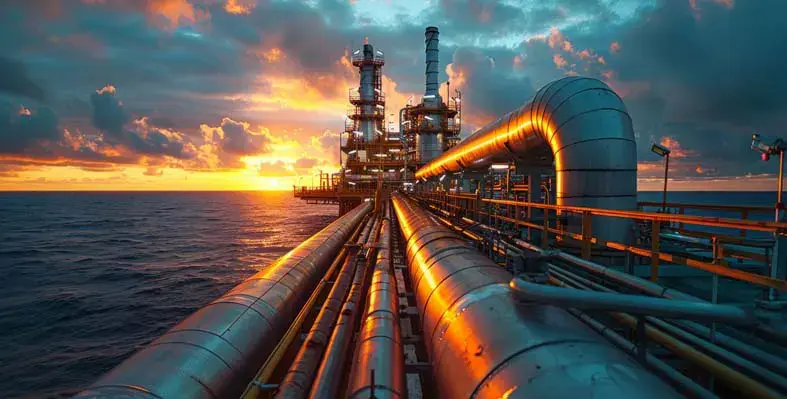
 In an operational update from the SASB gas field well intervention programme, Trillion Energy International has noted the improved flow rates from the South Akcakoca-2 well.
In an operational update from the SASB gas field well intervention programme, Trillion Energy International has noted the improved flow rates from the South Akcakoca-2 well.
“The fantastic response of South Akcakoca-2 once the water was lift off the perforations indicates that the reservoirs will produce the gas they contain once the water loading is removed. The wells are going to be perforated and monitored during clean up to evaluate the reservoirs response. The next phase of this project is to install the smaller production tubing (2 3/8”) to allow the wells to produce for a few years before water loading occurs again," Arthur Halleran, CEO of Trillion, said.
The South Akcakoca-2 well was perforated over the intervals 2319.5-2323.5 (4.0 m), 2339.6-2341.3 (1.7m) and 2411.1-2412.8 (1.7m) for a total of 6.4 m (all measured depth MD). Well hole pressure (WHP) was 86 psi before perforation, the WHP increased to 1046 psi.
The well flowed continuously from early 9 July, and by 10 July afternoon the flow rate was 0.70 MMcf/d with a WHP of 140 psi. By 15 July, the flow rate was 2.88 MMcf/d with a WHP of 318 psi.
Monitoring of the South Akcakoca-2 well will be continued until it hits a stable point.
The production characteristics indicated that perforating the new zones blew the water out of the well, while also implying that the reservoirs that were water-blocked are cleaning up and producing gas.
Guluc-2 well was perforated over the intervals 3512-3514.5 (2.5 m), 3749.5-3751.3 (1.8 m), 3770.7-3772.4 (1.7m) and 3781.6-3783.3 (1.7m) for a total of 7.7 m (all MD). WHP was 650 psi and increased to 1243 psi before settling to 1098 psi.
Guluc-2 will be flowed to clean the water and perforation debris out and be capable of gas production, however, it will then be shut in while South Akcakoca-2 well gas production stabilises.
The increase in the WHP during perforation indicates gas flowed into the borehole from the new perforated zones.
Updated flow rates have yet to be established for this well due to the ongoing testing of SA-2.
The perforation operation is currently continuing ongoing on West Akcakoca-1 well after which it will perforate the remaining pay in Akcakoca-3.
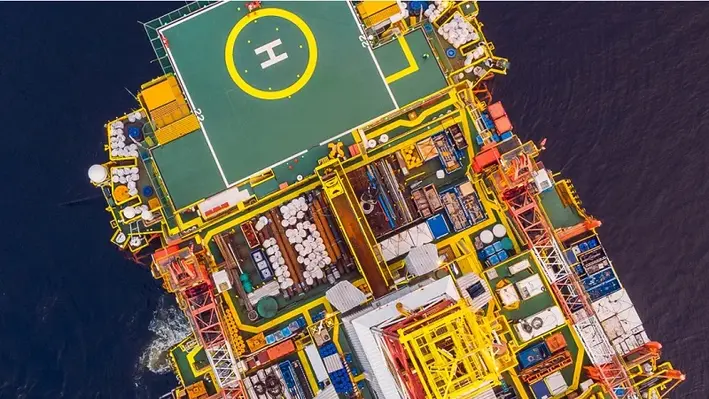

The North Sea Transition Authority (NSTA) has warned North Sea operators that they must act now on well decommissioning or risk losing the support of the associated supply chain which will begin to look elsewhere in search of work.
Repeated delays to well plugging and abandonment work, competition for rigs from overseas and cost pressures are pushing up the estimated bill for decommissioning on the UK Continental Shelf – information made clear in the latest Decommissioning Cost and Performance Update from the organisation. According to this report, operators expect to spend about UK£24bn on decommissioning between 2023 and 2032, up UK£3bn on the forecast for the same period in last year’s report.
The NSTA has drawn attention to the importance of sharing knowledge, learning lessons and producing robust plans which helped lower the cost of decommissioning by an estimated UK£15bn between 2017 and 2022. However, it stated that further improvements have been difficult to achieve as much of the low-hanging fruit has been picked.
More than half of the overall estimate of UK£40bn (in constant 2021 prices) is to be spent during this 10-year period, which shows near-term actions will set the direction for the sector. Embedding good practice now and striking a balance between supply chain capacity and demand for its services is crucial, the NSTA reports.
Pockets of operators continue to collaborate, perform admirably and deliver savings, but the majority need to improve by doubling down on their planning. Operators spent around UK£2bn on decommissioning last year, which was in line with forecasts, but they completed much less work than originally planned. In regard to P&A, the NSTA stated that operators can keep their costs under control and meet their regulatory obligations by engaging early with the UK’s world-leading supply chain, providing details of their inactive wells and, most importantly, placing contracts to get the work done.
Hundreds of wells will need to be decommissioned every year as more oil and gas fields shut down, the NSTA explained. However, operators only achieved 70% of planned well decommissioning activities last year. Some operators, it continued, are deferring in hope that prices will go down in the coming years. However, failing to award contracts reduces the supply chain’s revenues and ability to invest in capacity and resources. Rig contractors are actively seeking opportunities in other regions where operators offer longer, more secure contracts. If this trend continues, prices will increase, as reflected in market forecasts.
In addition to exploring the use of sanctions, the NSTA is spearheading a project to identify which UKCS wells will be ready for decommissioning between 2026 to 2030 and assess the supply chain capacity required to undertake the work in a timely and cost-effective manner.
“With spending forecast to peak at UK£2.5bn per year in the current decade, decommissioning can ensure that the UK’s world-leading supply chain is equipped to help operators clean up their oil and gas infrastructure over the next 50 years and support the carbon storage sector, which will rely on many of the same resources,” said Pauline Innes, the NSTA’s Supply Chain and Decommissioning Director.
“I am concerned that this huge opportunity to safeguard highly-skilled jobs and support the transition will be wasted if operators fail to tackle their well decommissioning backlogs. The supply chain wants to do this work, but it is not physically tied to the UK. Its skills and resources are in demand in other regions, and we are starting to see companies marketing their rigs elsewhere. Operators need to use the supply chain, now, or risk losing it.”
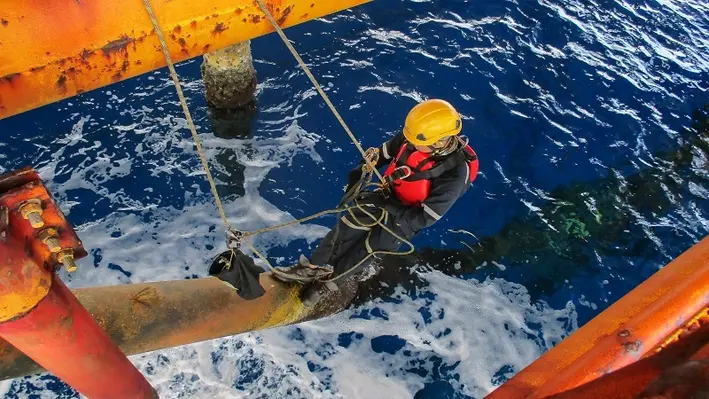
 Exciting times lie ahead for the offshore Health, Safety & Environment (HSE) community in the Gulf of Mexico as Offshore Network’s inaugural HSE GOM 2024 Conference is set to debut in Houston on 8-9 October this year.
Exciting times lie ahead for the offshore Health, Safety & Environment (HSE) community in the Gulf of Mexico as Offshore Network’s inaugural HSE GOM 2024 Conference is set to debut in Houston on 8-9 October this year.
The event, which will open its doors in the Hilton Greenway Plaza in Houston, is set to make its mark on the HSE sector with attendees gaining exclusive access to operator best practices and innovative technologies while exploring key strategies to enhance safety performances across the region.
Attendees will also hear from regulators (including the Bureau of Safety and Environmental Enforcement) on standards development, industry-leading strategies for cultivating a prosperous safety culture, and the latest cutting-edge advancements in PPE. More than 20 expert speakers are set to take to the stage to cover topics such as safety culture, process safety, planning and preparation, and technology and innovation.
With 150+ HSE decision makers set to be in attendance, ten technology demonstrations, seven networking events and a series of dedicated sessions, the conference promises to provide an insightful and fruitful experience for all who wish to develop their knowledge about all things HSE.
For more information about HSE GOM 2024, head to the website here to download the full agenda and see the complete list of speakers. For any additional enquiries, please contact Jack Heffernan at

 A comprehensive session on plug and abandonment (P&A) regulatory update will be delivered by Rafael Augusto do Couto Albuquerque, Rigs and Wells Coordinator, ANP at the soon to happening Offshore Well Intervention Latin America (OWI LATAM), to be held from 18-19 October 2022, in the city of Rio, Brazil.
A comprehensive session on plug and abandonment (P&A) regulatory update will be delivered by Rafael Augusto do Couto Albuquerque, Rigs and Wells Coordinator, ANP at the soon to happening Offshore Well Intervention Latin America (OWI LATAM), to be held from 18-19 October 2022, in the city of Rio, Brazil.
In this particular session, the region’s premier well intervention conference will provide attendees with in-depth knowledge on analysing the current offshore well decommissioning situation in Brazil to best position businesses and service providers for upcoming P&A work.
Rafael will also shed light on ways to understand the challenges faced by new operators within the Brazilian market to best prepare for future projects. Attendees are also given in-depth knowledge of new intervention technologies and ways to validate the equipment so that the operators and service providers have the opportunity to optimise their toolbox.
 OWI LATAM is poised to be the platform for discussion on the region’s offshore well intervention topics. The event features experts from international and regional companies, alongside regulatory bodies and service providers.
OWI LATAM is poised to be the platform for discussion on the region’s offshore well intervention topics. The event features experts from international and regional companies, alongside regulatory bodies and service providers.
To know more about the full programme, click here: https://www.offsnet.com/latam/conference-brochure
Or reach out to the details below:
Rachael Brand
Project Manager
T: +44 (0) 20 3409 3041


In its latest operations update, British independent upstream oil and gas company, Serica Energy, announced that its investment plans for the Bruce and Keith Light Well Intervention Vessel (LWIV) campaign is on track to take place between March and May 2024.
This follows previous campaigns in 2022 and 2023, which have delivered low-cost incremental production. The intervention is expected to restart production from the Keith field this year following successful preparation work on the Keith subsea facilities carried out in 2023. Additional well interventions from the Bruce platform are scheduled for the second half of 2024.
Besides well work on the Bruce and Keith fields, investments in 2024 include four wells in the Triton area (Bittern B1z sidetrack, Gannet E GE-05, Guillemot North West EC1 and Evelyn EV-02). The start date of the B1z sidetrack is set in March 2024. This well and the subsequent three wells are scheduled to take about three months each, meaning that drilling will continue into 2025. Serica has also exercised an option to keep the rig for a further well following completion of the fourth well in the programme (EV-02).
Serica is maturing plans for two infill wells on the Bruce field too with the aim of drilling in 2026.
Abandonment costs in 2024 are forecast to be about £14 million (pre-tax) net to Serica. These will be incurred mainly on the final decommissioning of the Arthur field, situated in the UK Southern North Sea, which was held by Tailwind Energy.
Reflecting on Serica's investment focus on enabling maximum production like from the Bruce and Triton assets, Mitch Flegg, Chief Executive of the company, said, "Production in 2024 is expected to be higher than in 2023 with guidance between 41,000 boe/d and 48,000 boe/d for the year. This reflects a range of outcomes in a year of significant activity including the speed with which the scheduled drilling and well work deliver incremental production.
"Serica's strategy of investing in its assets continues to be central to our record of consistently achieving high levels of reserves replacement, combined with increased levels of production. We are looking forward, therefore, to the start of the four well Triton area drilling programme in March, with the benefits of added production expected to start coming through in the second half of the year. During 2024 there is also an extensive programme of interventions in both platform and subsea wells on the Bruce and Keith fields. The objectives include re-establishing consistent production from the Keith field.
"In addition, Serica has a healthy portfolio of potential new projects. This includes the possible developments of the Buchan and Belinda fields, which offer the prospect of further replacement of produced reserves and incremental production from 2026 onwards. Our plans for drilling two Bruce infill wells, the first new wells on the field since 2012, are progressing and, during the next eighteen months, we will be participating in the Parkmead operated Skerryvore exploration well situated in the UK Central North Sea. As a UK taxpayer, Serica will benefit from tax relief for its share of the associated development and exploration costs.
"Serica is extremely well placed, therefore, to continue its track record of replacing reserves and increasing production. This platform has been achieved while maintaining a very strong balance sheet, which is both the result and enabler of our strategy to invest and grow organically and through disciplined M&A."
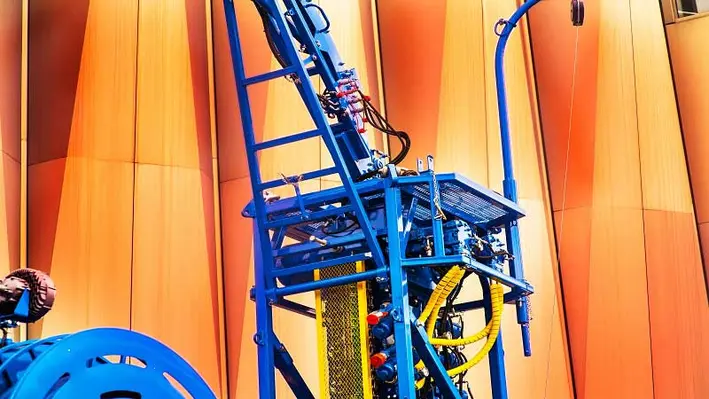

Accelerating the company's growth in the Brazilian market, Archer has secured a two-year platform drilling and well intervention contract with Trident Energy do Brasil, amounting to US$20mn.
The contract also leaves scope for an extension by an additional one year upon mutual agreement. This new award supports Archer’s growth in the Brazilian market and underscores our commitment to high-quality, innovative solutions in the energy industry.
Under the contract, Archer will provide comprehensive platform drilling services, including well interventions for regulatory requirements, workover and drilling operations, well maintenance and drilling facilities engineering, to enhance Trident Energy’s offshore assets in Brazil. The platform drilling services are set to commence during second quarter this year, initially on the Pampo PP1 platform, which follows a period of rig reactivation and recertification managed through Archer’s Platform Operations group.
Dag Skindlo, CEO of Archer, said, “We are pleased to be chosen by Trident Energy as their partner for their drilling programme. We look forward to a successful collaboration with Trident Energy and are confident in our ability to contribute to the success of their offshore operations.
"This contract builds on our continued growth as we continue to strengthen our position in the growing energy market in Brazil. Our legacy in Brazil stretches back to 2010, when we commenced our work for Equinor on the Peregrino fields, followed by the successful establishment and growth of our well services division over the last few years. We are excited about the Brazilian market and how our core services offering can support the broad spectrum of client well programmes in Brazil.”
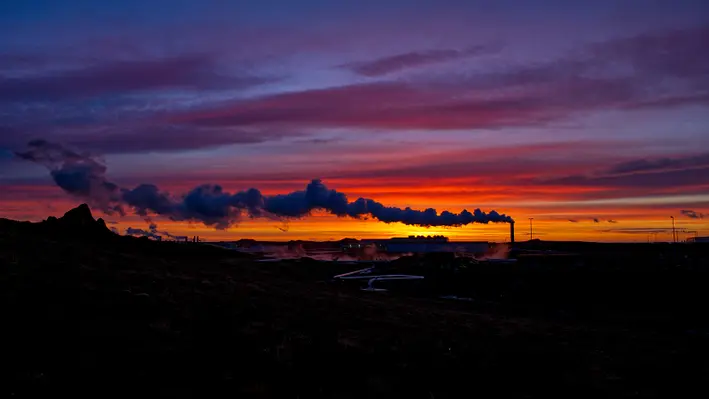
 Irish company TerraThermo Ltd and alfa8 Colab Ltd (alfa8) have announced the signing of an Investment Agreement to financially support the development of Projekt Thermo, a 12MW deep geothermal power plant project in Germany.
Irish company TerraThermo Ltd and alfa8 Colab Ltd (alfa8) have announced the signing of an Investment Agreement to financially support the development of Projekt Thermo, a 12MW deep geothermal power plant project in Germany.
The investment made by alfa8 covers the provision of up to EUR€1mn in working capital to advance Projekt Thermo to a financial close, and up to EUR€32.5mn in future financings for the project.
TerraThermo will use the working capital to undertake technical and financial due diligence on the project, with the intention of reaching financial close in Q4 2024/Q1 2025. The company is also in discussions with the European Investment Bank EIB for a potential parallel investment to fund up to EUR€32.5mn for the project, in addition to the investment already provided by alfa8.
The first stage of Projekt Thermo is to develop a 12MW ‘Hot Dry Rock’ geothermal power plant in Lower Saxony, Germany, marking the first of many deep geothermal generation and energy storage projects to be developed by TerraThermal in Europe.
John Ashbridge, CEO of TerraThermo, is “extremely pleased” to welcome alfa8 as an investor in the project, given the company’s “focus on first-of-a-kind technology and our matching visions and expectations of what can be achieved in the geothermal energy industry in the coming years.”
Erin Glen, COO of alfa8, commented, “TerraThermo is focused on delivering a first-of-a-kind, deep hot dry rock geothermal project in Europe. We are excited to team up with them to accelerate the development of geothermal technology in Europe. At alfa8, we are on a mission to deploy catalytic capital into the energy transition and promising first-of-its-kind technologies that can accelerate the path to net-zero.”
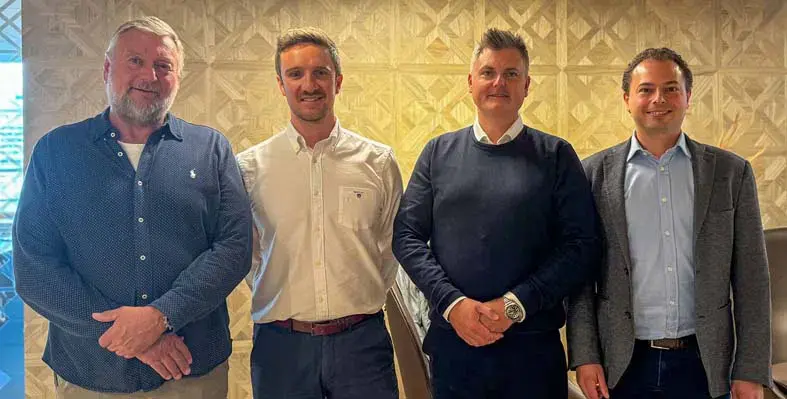
 Wells and subsurface specialist, Elemental Energies, has announced the acquisition of Norway-based well management and consultancy company, Well Expertise AS.
Wells and subsurface specialist, Elemental Energies, has announced the acquisition of Norway-based well management and consultancy company, Well Expertise AS.
Expected to generate revenues surpassing £50mn in 2024, the acquisition also adds significant growth to Elemental's North Sea expansion ambitions in Norway.
The Well Expertise acquisiton is the latest in a series of strategic acquisitions by Elemental Energies, including Vysus Senergy Wells in December 2022, Norwell Engineering in May 2023 and Sentinel Group in February 2024.
The acquisition established the companies' shared growth ambitions in well management services across oil and gas, decommissioning, geothermal, and carbon capture and storage projects.
Mike Adams, CEO of ElementalEnergies, said, “Norway is a pivotal region for us through its stable energy policy that prioritises both security and transition, aligning with our core ambitions as a business. As a mature market, Norway faces the challenge of managing new production with decommissioning and energy transition which present significant opportunity. This deal marks the start of the next chapter for both companies, as we build a strategic global wells and subsurface partner that will allow operators to outsource larger and more diverse projects with confidence.”
Sigve K. Næsheim, who will continue as CEO of Well Expertise and head up Norway operations, said, “This acquisition marks a significant milestone, underscoring our commitment to providing best-in-class well engineering and project management services. From the outset, our strategic alignment with Elemental Energies has fostered a shared vision to become the go-to global well management partner for projects spanning exploration,production, decommissioning, CCS, and geothermal. As part of Elemental Energies, we are able to expand the development opportunities for our team, bring new perspectives to our projects,and deliver expanded capabilities to our clients.”
Stig Seland, Commercial Manager of Well Expertise and one of its founders, said, "At Well Expertise, we have built long-term relationships with our customers through our collaborative and customer-first approach, which has been the cornerstone of our success. I am very pleased to announce that we can now offer an even broader range of services to our clients. Rest assured, our commitment to putting customers first will remain our primary focus as we continue to support the future of Norwegian energy."
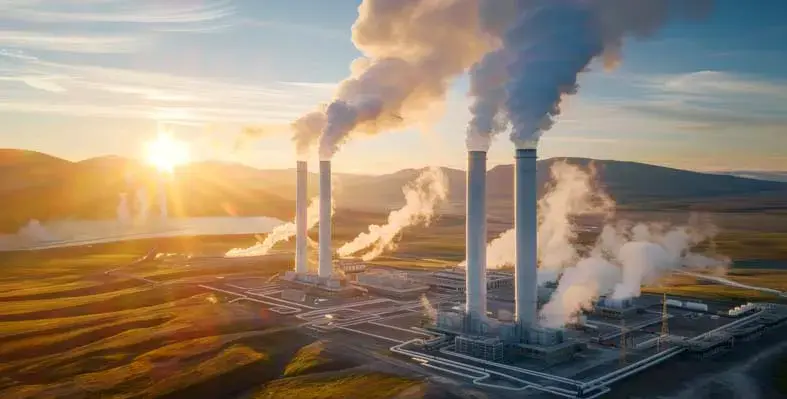
 Backed by the Ministry of Economic Affairs and Employment and Salon Kaukolämpö Oy, Lounavoima is developing a geothermal heat well storage at its waste-to-energy (WtE) plant at the Lounapuisto circular economy park in Salo.
Backed by the Ministry of Economic Affairs and Employment and Salon Kaukolämpö Oy, Lounavoima is developing a geothermal heat well storage at its waste-to-energy (WtE) plant at the Lounapuisto circular economy park in Salo.
Following good test run from the first well, three additional wells are now being constructed. The final heat well is expected to be completed by the summer of 2025.
Upon completion, the WtE plant will have six geothermal heat wells with a combined output of 6MW.
Waste heat produced by the WtE plant is stored at a depth of more than 2 kms in the geothermal heat wells to cover the district Salo's heating requirements during the winter.
The first well which was tested last winter runs 1,600-metre-deep, producing 450 MWh of energy from January to March.
A second heat well, which is undergoing tests, was drilled in the autumn of 2023 and a third was drilled in the winter of 2024. Its pipework will be completed in the late summer.
Finnish company Geomachine Oy deployed new drilling equipment which were specially designed for the exploration of the heat wells, achieving a target depth of 2,000 metres. The heat pump process was delivered by Calefa Oy.
Once all the heatwells are brought onstream, the six new geothermal heat wells will have a combined output of as much as 14 GWh a year, which is equivalent to the annual heating need of approximately 700 single-family homes.
“The heat well production will always be used first if the district heat output of the WtE plant isn’t enough. This allows us to primarily replace the need for starting oil heating plants and, in many cases, we can also avoid the need to start a backup power plant,” said Lounavoima and district heating company Salon Kaukolämpö's Managing Director Petri Onikki.
“We have such top expertise here in Finland. Even though the new technology development project has not always gone smoothly, the results have exceeded our expectations. The geothermal heat wells have a multiplying effect on heat production in Salo,” said Onikki. “The project is a successful example of concrete circular economy work at Lounapuisto,” he added.
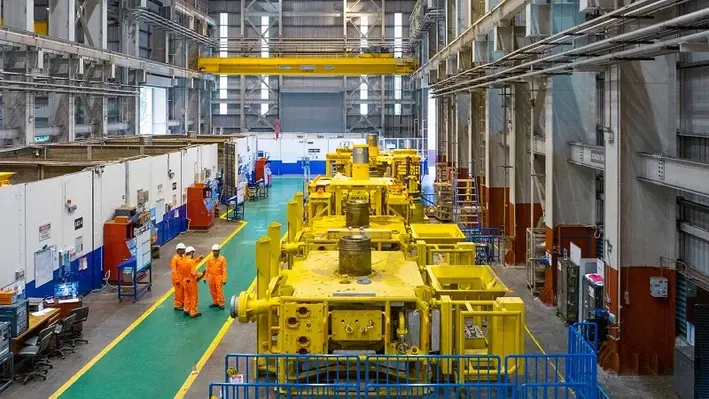

SLB, a global technology company, has announced the award of a contract by TotalEnergies to SLB OneSubsea, a joint venture between SLB, Aker Solutions and Subsea7. The project includes a 13-well subsea production system scope, including associated equipment and services, in the development of the Kaminho project, offshore Angola.
TotalEnergies will work with SLB OneSubsea to deliver a sustainable project that will improve production in Angola. During the Kaminho project’s first phase of development for the Cameia field, SLB OneSubsea will collaborate with TotalEnergies to deploy a highly configurable subsea production platform with standardised vertical monobore subsea tree, wellhead, and controls system.
“We are excited for this opportunity to unlock the large potential of the Kaminho project together with TotalEnergies,” commented Mads Hjelmeland, CEO of SLB OneSubsea. “Our collaborative contract model enables us to leverage both standardisation and highly configurable subsea production platforms, creating greater efficiencies and long-term value for this and future projects in Angola and around the world.”
The Kaminho project overall will involve more than 10 million man-hours in Angola, mainly with offshore operations and construction at local yards. SLB OneSubsea will play a significant role in supporting the Kaminho project locally in Angola for offshore operations including assembly, manufacturing of modules, installation, commissioning, and life-of-field services.
Page 46 of 111